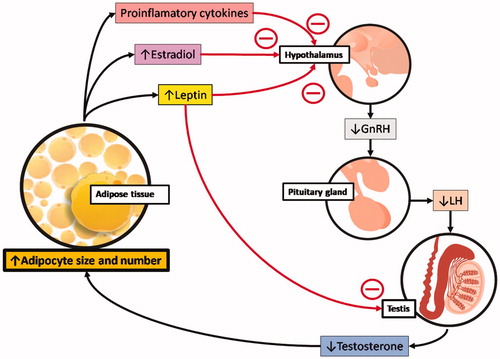Figures & data
Figure 1. Low testosterone levels and the accumulation of adipose tissue. The expansion of adipose tissue is associated with signals that inhibit the hypothalamic–pituitary–testicular axis and result in decreased androgen levels. Many of these signs target the hypothalamus and reduce gonadotropin-releasing hormone (GnRH) stimulation of the pituitary. This results in lower luteinizing hormone (LH) pulse, decreasing gonadal stimulation, and testosterone release. The signs from adipose tissue that interfere with hypothalamic function include the release of proinflammatory cytokines, higher conversion of testosterone into estradiol (due to the aromatase activity in adipocytes) and the release of the hormone leptin, which directly inhibits the stimulatory action of gonadotropins on the Leydig cells of the testis to decrease testosterone production further. All these signs can accentuate the expansion of fat depots and lead to a state of hypogonadotropic hypogonadism, obesity, and, eventually, metabolic syndrome.

